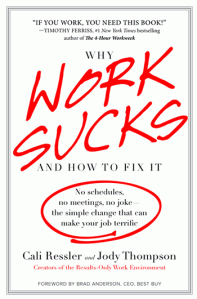I usually make decisions quickly. I don’t dilly-dally. I get the information I need, give it just enough thought, and then I go.
But I couldn’t do that in this case.
This time, I had to sit with a feeling for months. I kept thinking and thinking and coming to the same conclusion in my gut, but I couldn’t move. I had to keep dipping my toe in the water, hoping that at some point the temperature would feel perfect.
I finally had the realization over the past month that the water was never going to be just right, that the circumstances were never going to align themselves perfectly. If I wanted the change I had been envisioning, I just had to jump.
Last week, I turned in my good-bye letter to Girl Scouts. I had been with the organization for seven and a half years. That was a mighty big band-aid to rip off. But I needed to do it. I realized that I had grown comfortable: I was addicted to the stability of a consistent paycheck and the comfort of health insurance.
On the surface, those may not seem like bad things to get addicted to, but once I realized what I was giving up in the name of achieving that security, I couldn’t look back.
When I first started working, I believed that work was a life sentence we all had to serve, and that the best I could hope for was a job I didn’t hate, with a good salary and some benefits. I felt pretty lucky to have found that comfort at a young age.
But when I became CEO three years ago, a light bulb was flipped on for me. It was dim at first – this slight flicker of an idea that somehow the way that society had conditioned me and everyone else around me to work was wrong. There was something wrong with being chastised like a five year-old for showing up ten minutes late to work. There was something wrong with having to ask permission to take a couple hours off in the afternoon to go to the doctor, as if we were third graders asking for a bathroom pass. There was something wrong with a hierarchy that required staff to write multiple memos to justify buying a $12 pair of computer speakers so that they could listen to an online training. There was something wrong with the fact that I felt that every time I walked through those office doors I had to leave half of myself on the sidewalk.
So I decided to change everything. I read an amazing book called Why Work Sucks and How to Fix It, and within a month we became the first non-profit Results-Only Work Environment in the country. I found inspiration from Zappos and books like The Levity Effect and realized that half of what made work suck was that it wasn’t much fun. I started serving kids’ cereal at morning meetings. It became ok for people to laugh and to dress in silly costumes and to just be themselves.
I didn’t realize it as first, but as our organizational culture changed, I changed too. Our VP of Human Resources used to joke that when he first met me, he thought I had no personality. People who met me two or three years ago, when all of this change was just starting to happen, say that I’m a completely different person now – in a good way.
The difference is that I got comfortable being myself.
That light bulb that was once dim was now glowing brightly.
When I launched my Regret Me Not Project back in September, I knew I wasn’t the same person I had been. I was looking at life differently. And looking at work differently. I put a new value on every minute of my day, and didn’t want to waste any of time doing things that drained my spirit and stifled what I knew I was capable of contributing.
Soon, I started to have this strange, nagging feeling that I wasn’t quite where I was supposed to be and that I wasn’t quite doing what I was supposed to do. I started to feel frustrated and knew in my gut that it was time for me to make a big change.
There was still the problem, though, of the paycheck and the health insurance. Those things had built fences around me, and fences have a funny way of creating both a sense of security and a sense of fear.
But the more I sat with the fear, the more I realized I wasn’t willing to live with a constant state of unease and the overwhelming feeling that life had much more to offer me. I realized that staying behind the fences was actually more frightening then stepping out.
So I stopped dipping my toe in the water and I jumped in.
Within the week or so, I will have moved to New York City. I’ll be exploring, doing whatever work I get most excited about, and living a choose my own adventure, walking down my own path.
Starting now.




